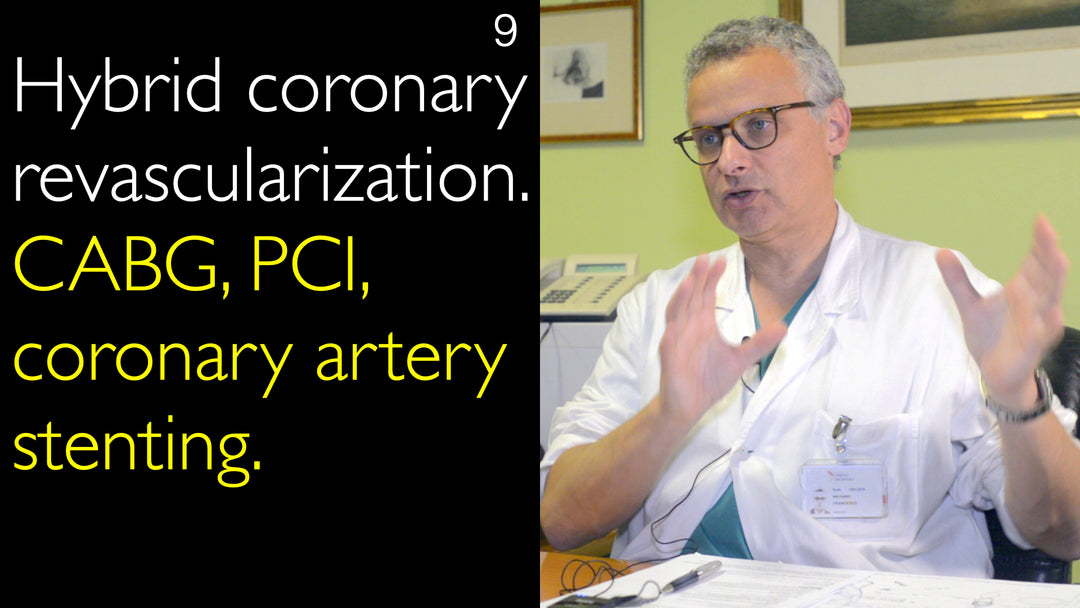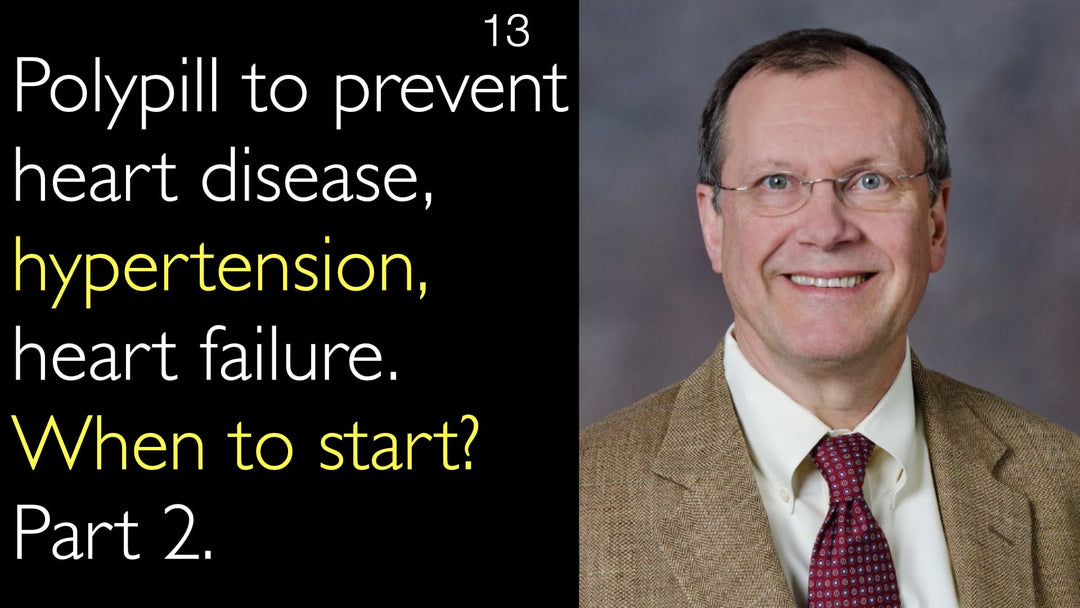Leading expert in hybrid coronary revascularization, Dr. Francesco Maisano, MD, explains how this procedure combines coronary artery bypass surgery and stenting. He details the philosophy behind this advanced treatment for multivessel coronary artery disease. Dr. Francesco Maisano, MD, discusses the superior long-term prognosis of a mammary artery graft to the LAD coronary artery. He advocates for a team-based approach between cardiac surgeons and interventional cardiologists. This hybrid strategy aims to improve patient acceptance and outcomes.
Hybrid Coronary Revascularization: Combining CABG and PCI for Optimal Heart Disease Treatment
Jump To Section
- What is Hybrid Revascularization?
- Philosophy Behind the Procedure
- Current Treatment Indications
- Patient Benefits and Acceptance
- The Future of Heart Team Care
- Full Transcript
What is Hybrid Revascularization?
Hybrid coronary revascularization is a sophisticated cardiac procedure. It strategically combines two established treatments for blocked coronary arteries. The procedure involves coronary artery bypass grafting (CABG) surgery and percutaneous coronary intervention (PCI) with stenting.
Dr. Francesco Maisano, MD, describes it as combining the best of both worlds. This approach is specifically designed for patients with multivessel coronary artery disease. It is performed by a collaborative team of cardiac surgeons and interventional cardiologists.
Philosophy Behind the Procedure
The core philosophy hinges on the unique benefits of each treatment modality. Dr. Francesco Maisano, MD, explains that the left internal mammary artery (LIMA) graft to the LAD coronary artery offers the only proven prognostic benefit in bypass surgery. This specific graft has demonstrated superior long-term outcomes compared to PCI alone.
This prognostic procedure is often performed first in a minimally invasive fashion. Subsequent PCI on the remaining coronary lesions then addresses symptoms and improves quality of life. The PCI is performed under the protection of the newly placed LAD graft, making it a lower-risk intervention.
Current Treatment Indications
Current clinical decisions are heavily guided by coronary artery anatomy. Dr. Francesco Maisano, MD, notes that complex coronary anatomy is often better treated with surgery. PCI is generally a less favorable option for diabetic patients with multivessel disease.
Conversely, PCI may be preferred for very high-risk surgical patients regardless of their anatomy. In theory, as Dr. Maisano discussed with Dr. Anton Titov, MD, hybrid revascularization could be an option for every patient needing coronary intervention. However, a large-scale clinical trial is needed to establish this as a standard of care.
Patient Benefits and Acceptance
A significant advantage of the hybrid approach is improved patient acceptance of necessary treatment. Dr. Francesco Maisano, MD, highlights the stark contrast in patient experience between PCI and traditional open-heart surgery. PCI often allows a patient to be treated and discharged within a day.
Traditional CABG surgery requires a sternotomy and a recovery period of up to three months. The hybrid strategy aims to mitigate the high early risk and lengthy recovery associated with full surgery. By blending techniques, it offers a more palatable path to achieving the superior long-term benefits of surgical revascularization.
The Future of Heart Team Care
The successful implementation of hybrid revascularization depends on seamless collaboration. Dr. Francesco Maisano, MD, emphasizes the need for more interaction between cardiac surgeons and interventional cardiologists. He predicts this procedure will become a more common option as these heart teams evolve.
In his current role, Dr. Maisano is incorporating this technology into patient care. He leads a team of highly specialized experts focused on minimally invasive coronary treatments. This team-based model represents the future of managing complex coronary artery disease, offering patients tailored, state-of-the-art care.
Full Transcript
Dr. Anton Titov, MD: Hybrid coronary revascularization combines arterial coronary artery bypass grafting surgery and percutaneous coronary artery stenting. This is a sophisticated procedure for the treatment of multivessel coronary artery disease. What are the indications for hybrid coronary revascularization in your practice?
Dr. Francesco Maisano, MD: It's a very interesting question. A few years ago, I wrote an editorial together with Dr. Antonio Colombo. We are convinced that we should do more of this procedure, hybrid coronary revascularization.
The main issue here is that the data available is too little to create a standard. We have more of a philosophy behind the evidence. The philosophy is the following: the only prognostic data on coronary artery bypass grafting is the graft of the mammary artery on the LAD coronary artery. Everything else has a less prognostic impact.
We can do mammary artery LAD grafting in a very minimally invasive fashion. This graft has been shown superior to PCI. So, if we do this prognostic procedure first and then let all the rest of coronary artery lesions be treated by PCI, we combine the best of the two worlds.
We act on the prognosis with the bypass grafting, and we act on symptoms and quality of life with PCI. PCI will be done under protection by the first graft, so it will be a low-risk procedure.
So, what are the indications for hybrid coronary revascularization? Basically, in theory, it may be every patient with coronary artery disease who needs intervention. This should be demonstrated by a clinical trial, which has not been done yet appropriately.
But in principle, it could be a solution for everyone to improve also the acceptance of CABG surgery. Because, obviously, if you look at the current scenario of coronary artery disease intervention, you have two options.
One option is that you come to the hospital, and within one day, you have your solution, and you can walk out with treated coronary arteries. Or you go to the operating room, you get your chest cracked open, and it will take three months before you are fully back into your lifestyle practice.
Obviously, most of us, including probably myself, would tend to get the easiest solution. Obviously, we know that in the long term, CABG surgery is much better. But I always think that to reach the long term, I need to reach the short term.
So the mortality and morbidity risk of a surgery over time is blunted by the risks of PCI. But still, the early risk is higher for surgery than PCI.
So today, we drive our decisions based on the anatomy of coronary arteries. We know that complex coronary anatomy can be better treated by surgery. PCI is less of an option in diabetic patients. And the opposite is true: if the patient is a very high risk, we like to do PCI regardless of the anatomy.
So we follow this kind of rule. But if we move forward, I also think in this field. Once there will be more interaction between cardiac surgeons and interventional cardiologists, I can predict hybrid coronary revascularization becoming more and more of an option.
And actually, this will be done soon. I am here in my new position as a heart valve center leader. I like to incorporate different technologies for patient treatment.
Today, I focus on heart valves. I've been very much working on coronary arteries. I performed many coronary artery surgeries in the past years. Even today, if needed, I can do that.
I do it, I think, reasonably well. But I like to have, under my guidance, a team of people who are highly specialized, who are doing minimally invasive coronary artery treatments. We are adopting hybrid coronary revascularization procedures in many patients because I really believe it's the way to go.








